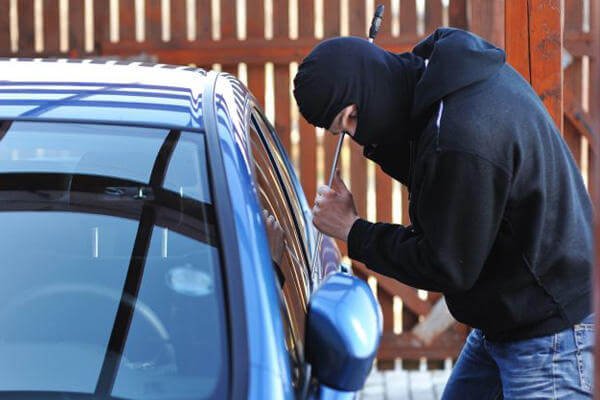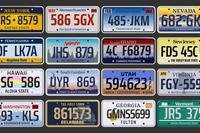What's inside your car may be more attractive to thieves than your car, warns Frank Scafidi, public affairs director for the National Insurance Crime Bureau.
"There's always going to be some crook who wants something you have and doesn't want to pay for it," Scafidi says. "That's why keeping your car locked with your stuff out of sight is so important."
Here are three factors that could make your car a target, and what you can do to fight back.
1. You've become complacent.
What they do: Thieves take advantage of drivers' laxness. "We've seen a number of theft claims recently where the vehicle was left unlocked, creating an even greater likelihood of a car theft," Sonia Gutierrez, USAA claims service director, says.
What you can do: Be vigilant, and remember the basics: To lessen your risk, park in a well-lit, populated area. Roll up the windows and lock your vehicle every time you exit — even when you park outside your home. If possible, don't leave your car in an unsecured lot overnight. And never hide a spare key on or near the car; thieves know all the hiding spots.
2. You leave expensive items in plain view.
What they do: Due in part to more advanced theft-prevention technologies that come standard on many new vehicles, you're more likely to be the victim of a vehicle break-in than car theft.
"Rather than taking the whole car, crooks are often just sticking with the good old smash-and-grab crimes of opportunity and making off with items they can take quickly and carry easily," says Scafidi.
Not surprisingly, electronics are popular with thieves. "The most commonly stolen items from vehicles are smartphones, iPods®, laptop and tablet computers, and GPS units," Gutierrez says.
But expensive car parts are also hot items. The Insurance Information Institute has been reporting high numbers of stolen air bags for almost a decade. And the National Insurance Crime Bureau reports a growing trend in the theft of catalytic converters, which contain small amounts of precious metals that can be sold as scrap.
What you can do: Never leave electronic devices or other valuables — such as purses, wallets, backpacks and shopping bags — in plain view. Before you get to the destination where you plan to park your car and leave it unattended, lock your valuables in the trunk or the glove compartment. You don't want lurking, would-be thieves to see where you put them.
Also, invest in an alarm system and other anti-theft devices, such as wheel locks or a steel-bar steering wheel lock, which can block access to the air bag. Bonus: By using these devices, you might qualify for insurance discounts.
3. Your security system isn't secure enough.
What they do: Would-be thieves can go on the Internet and find a wealth of information — not to mention instructional videos — on how to quickly break into any type of vehicle.
Ivan Blackman of the National Insurance Crime Bureau cites two lower-tech examples. Some car-theft gangs have used small pieces of ceramic (or a ceramic spark plug) to break car windows with a minimum of noise. Other criminals have found that some vehicles can be unlocked — without setting off the alarm — by jamming a screwdriver into the key hole and twisting it forcibly. Many manufacturers are working to correct this problem in newer models.
What you can do: Don't display labels that identify your security system. This makes it easier for thieves to figure out how to get around it. Also, thieves will often start by disabling the car battery. Installing a second battery for the car alarm system or a hood lock that secures the hood latch could help deter thieves from tampering or walking away with under-hood parts.
There may be no way to counteract every angle car thieves come up with, but using common sense and practicing a few extra security measures can dramatically reduce your risk of becoming the next statistic.
Do you have the insurance you need?
If a thief breaks in to your car and steals the valuables inside, will auto insurance cover your losses? It depends on your coverage.
"It's important for drivers to understand that a basic auto liability policy is designed to pay for damage their car does to other people or property," Gutierrez says. "Liability doesn't cover damage to the policyholder's vehicle or personal items that are stolen from inside their car." Here's what you need:
- For damages to your car caused by a break-in, you'll need comprehensive coverage added to your auto insurance policy. This should help pay for the loss of items permanently attached to the car, such as a car stereo or in-dash GPS system, as well as the shattered windows, broken locks and other damages.
- Loose items stolen from inside the vehicle, such as your smartphone or purse, generally aren't covered by your auto policy, Gutierrez says. Instead, they would be covered by your homeowners or renters insurance, up to the policy limits. However, keep in mind that you'd have to meet the deductible — the amount you're responsible for before your insurance pays. So, filing a claim for a relatively small loss might not make sense.
- If you regularly have electronic devices, such as a laptop or an iPad® in your car, consider a personal computer add-on to your homeowners or renters policy. This can offer protection for a few more dollars a year, with a much smaller deductible.
- For more expensive items, such as firearms, digital cameras and jewelry, a valuable personal property insurance policy is recommended.
In case the worst does happen, and you are a victim of theft, having the right insurance is crucial for covering your losses. Compare insurance rates and coverage now.













